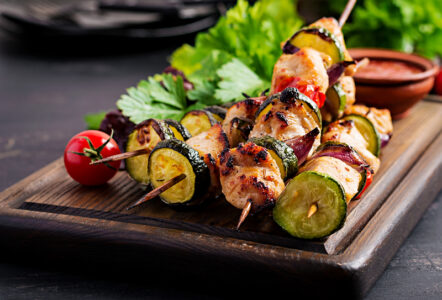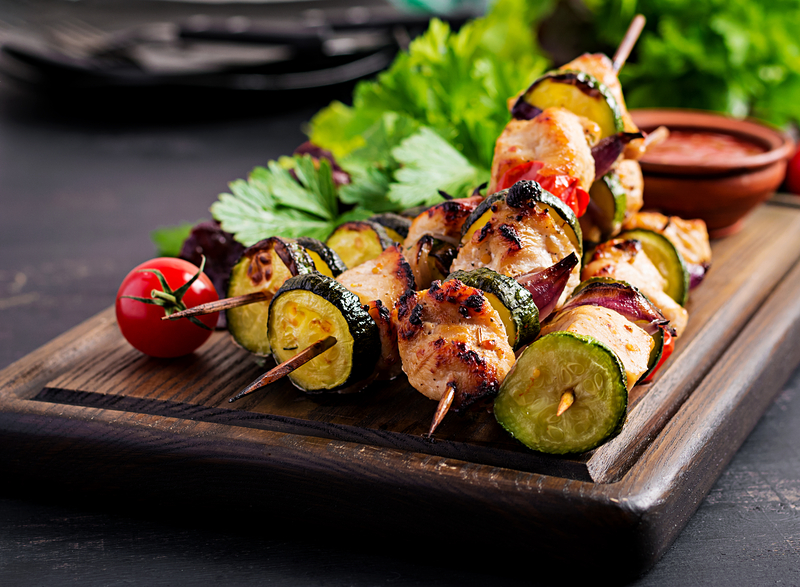 When considering whether wood or charcoal is the healthier option for grilling, it is important to look at the nuances of each fuel source.
When considering whether wood or charcoal is the healthier option for grilling, it is important to look at the nuances of each fuel source.
Both wood and charcoal bring unique flavors and cooking outcomes to the table, yet they each have distinct health implications.
Charcoal grills can produce more harmful pollutants compared to wood due to the presence of additives and chemicals in some charcoal products.
The use of natural wood in grilling can minimize the production of potentially harmful substances, making it a more favorable choice for health-conscious grillers.
Natural wood provides a robust flavor profile while avoiding the inclusion of synthetic chemicals found in some charcoal varieties.
However, it is essential to use properly seasoned and safe-to-burn wood to maximize benefits.
Despite the health considerations, taste preferences and cooking styles often play a significant role in the decision-making process.
While there are health advantages to using wood, charcoal remains a popular choice due to its ease of use and availability.
Entering into this grilling debate requires balancing health implications with personal preferences, leaving it to the individual to decide what aligns with their needs.
Overview of Grilling Methods
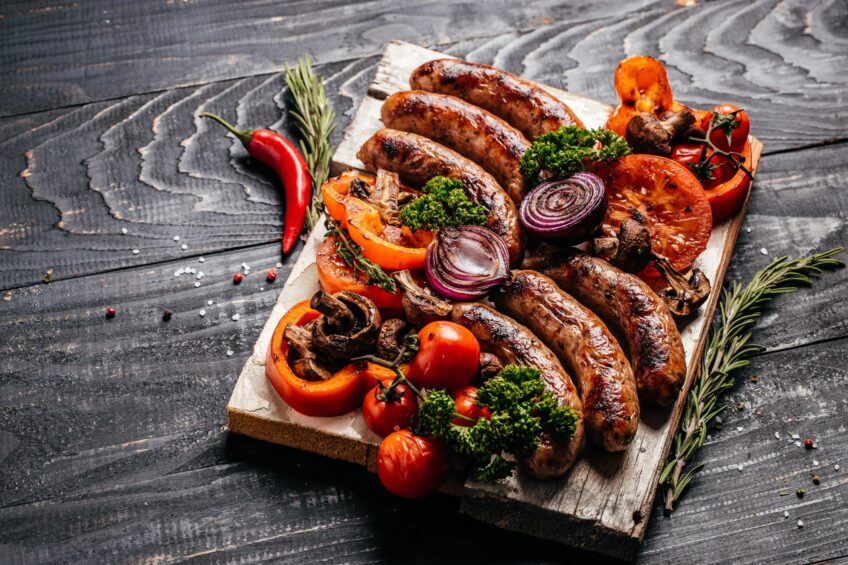
Grilling has become a favorite cooking method worldwide, with wood and charcoal being the most popular fuels.
A closer look at their origins and characteristics can highlight the differences in flavors and experiences they offer.
History of Grilling
Grilling traces back to the discovery of fire, where early humans cooked over open flames.
Over time, grilling evolved from basic open fires to more sophisticated grills.
Indigenous tribes in the Americas used direct heat and smoke, inspiring today’s methods.
The invention of the charcoal briquette in the late 19th century revolutionized grilling, providing a more controlled heat source.
This development enabled the popularization of charcoal grills, and by the mid-20th century, they became a staple in outdoor cooking.
Modern grilling keeps historical techniques but benefits from technological advancements, making grilling a diverse culinary art form.
Common Grilling Fuels
Wood and charcoal are the two most common fuels for grilling.
Each offers unique advantages and characteristics that affect flavor.
Wood provides a robust, smoky flavor, varying by wood type, such as oak, hickory, or applewood.
It often requires more skill to manage due to variations in heat output.
Charcoal, particularly briquettes, provides consistent heat and burns longer, making it easier for extended grilling sessions.
Lump charcoal, a less processed form, offers higher heat and a subtle, natural flavor.
Choosing between wood and charcoal largely depends on personal flavor preference and the specific grilling requirements of each cook.
Health Considerations in Grilling
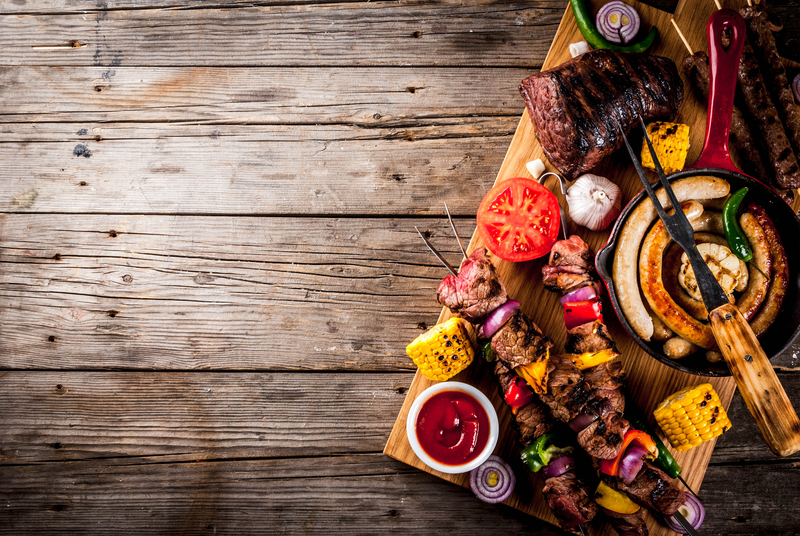
Grilling can impart unique flavors to food but also raises questions about health impacts.
Factors such as chemical compounds from smoke, nutrient retention during cooking, and risks associated with charred food are pivotal in evaluating these impacts.
Chemical Compounds in Smoke
When wood or charcoal combust, they release compounds like polycyclic aromatic hydrocarbons (PAHs) and heterocyclic amines (HCAs).
These compounds form when meat juices and fats drip onto the heat source, causing smoke.
Some PAHs found in smoke have been linked to cancer risks.
The level of these compounds can vary depending on factors such as cooking temperature and the type of grill used.
It’s essential to manage exposure by using techniques like controlling flame flare-ups and avoiding prolonged cooking times over open flames.
Certain marinades can also reduce the formation of these harmful compounds, offering an extra layer of protection.
Impact of Grilling on Nutrient Retention
Grilling can effectively retain nutrients compared to boiling or frying, as it generally requires shorter cooking times and minimal water use.
However, nutrient loss can still occur, particularly with vitamins sensitive to heat like Vitamin C and some B vitamins.
The method of cooking and the type of food grilled play significant roles in nutrient retention.
For example, quick grilling of vegetables helps preserve not only vitamins but also their texture and flavor.
Lean meats tend to retain their nutrients better when grilled at moderate temperatures.
Balancing heat and cooking time can maximize nutrient preservation, ensuring a healthy meal outcome.
Health Risks of Charred Foods
Charring meat leads to the formation of HCAs, which have been studied for their potential carcinogenic effects.
Factors influencing the formation of these include cooking time, temperature, and the type of meat.
Cooking at lower temperatures and avoiding direct contact with flames can minimize the risk.
Utilizing methods such as pre-cooking in a microwave to reduce grilling time can further assist in mitigating this risk.
Employing a grill basket or foil can also help reduce charring.
Choosing lean cuts and trimming excess fats before cooking can lessen the amount of smoke produced, thereby decreasing exposure to harmful compounds.
Properties of Wood as Grill Fuel
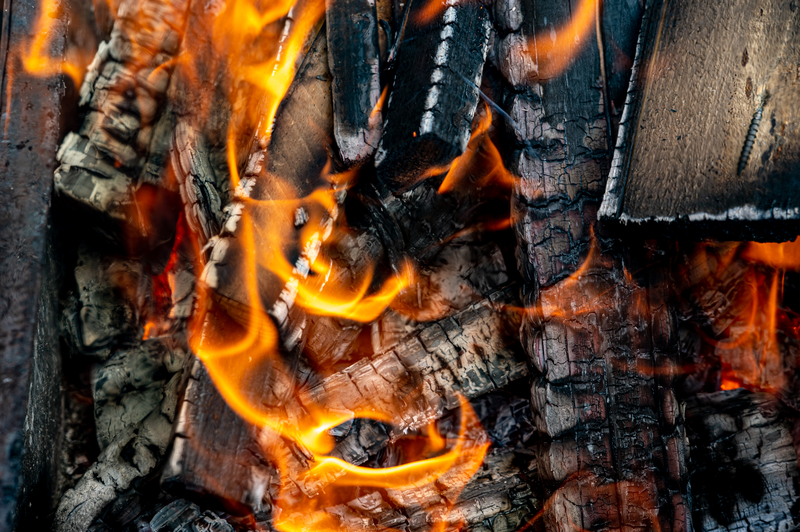
Grilling with wood adds unique flavors to food while offering various options in terms of burn rate and temperature control.
Different types of wood bring distinct taste profiles, and understanding these can enhance the grilling experience significantly.
Types of Wood for Grilling
Several types of wood are popular for grilling, each contributing its unique flavor and cooking characteristics.
Hardwoods like oak and hickory are widely used due to their durability and rich flavors.
Fruitwoods such as apple and cherry infuse a sweeter, milder taste, making them ideal for poultry and fish.
It’s important to note that softer woods or those with high resin content, like pine and cedar, are not suitable for grilling due to their tendency to produce unpleasant smoke and toxins.
Hardwoods Commonly Used:
- Oak
- Hickory
- Maple
Fruitwoods and Nutwoods:
- Apple
- Cherry
- Pecan
Grillers often select wood based on the type of food they plan to cook, ensuring flavors complement rather than overpower the dish.
Flavor Characteristics of Wood
The choice of wood significantly influences the flavor imparted to grilled food.
Each wood type offers distinctive smoke flavors that enhance the taste profile of meats, vegetables, and even fruits.
Hickory wood provides a strong, bacon-like flavor, making it suitable for pork and ribs.
In contrast, mesquite adds a more intense smokiness, often paired with beef.
For those seeking milder flavors, fruitwoods such as apple and cherry deliver subtle sweetness and a gentle smokiness.
Oak is appreciated for its balanced flavor, neither too strong nor too mild, and works well with almost any type of food.
Mixing different woods can create custom flavor profiles, allowing for diverse culinary experimentation.
Burn Rate and Temperature Control
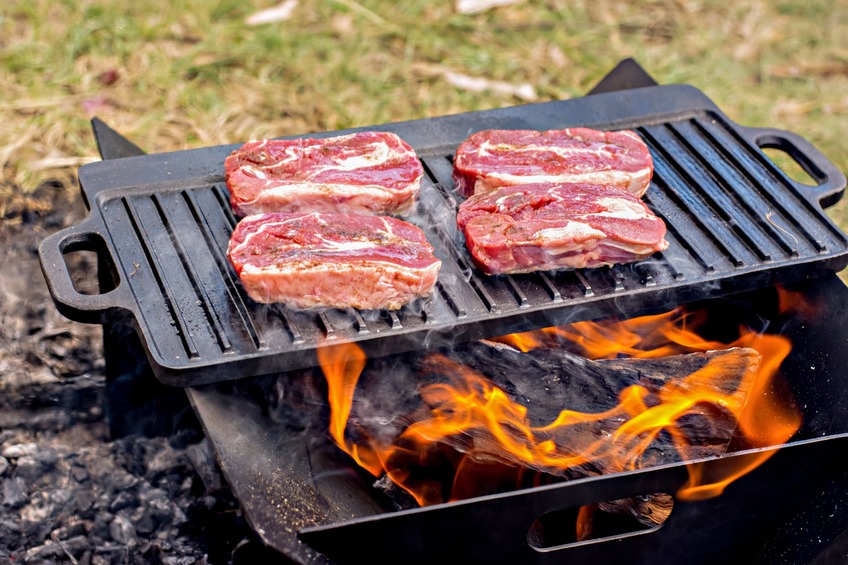
Wood burn rate and temperature control are crucial for effective grilling.
Different woods burn at varying rates and temperatures, affecting cooking duration and heat levels.
Hickory and oak, known for their density, provide a longer burn time and stable temperatures, suitable for lengthy cooking processes like smoking.
Fruitwoods generally burn quicker and at lower temperatures, ideal for foods needing less cooking time.
Grillers should consider the size of wood pieces; larger chunks burn slower, providing consistent heat, while smaller chips ignite faster, suitable for adding quick bursts of flavor.
Mastering the combination of woods and their burning characteristics enhances both cooking flexibility and flavor quality efficiently.
Properties of Charcoal as Grill Fuel
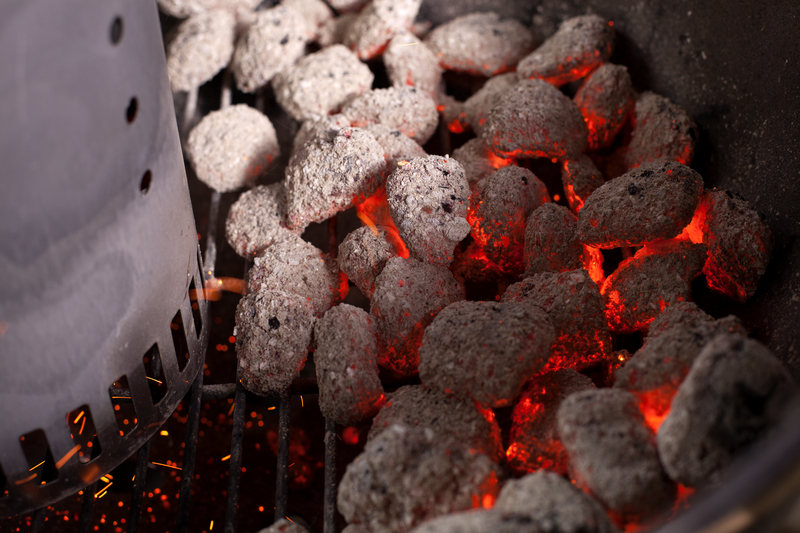
Charcoal offers unique traits that affect grilling outcomes.
Whether using lump charcoal or briquettes, factors like heat intensity, longevity, and user convenience play pivotal roles in its effectiveness.
Lump Charcoal Versus Briquettes
Lump charcoal is made from hardwood and is prized for its natural content.
It often burns hotter and faster, providing a smoky flavor preferred for searing meats.
Briquettes, on the other hand, are made from compressed wood by-products and additives.
They burn more evenly and longer, offering consistency in grilling times.
Briquettes are generally more affordable and accessible in stores, making them a popular choice for casual grillers who seek regular performance without surprises.
Heat Intensity and Longevity
Lump charcoal reaches higher temperatures, roughly 1400°F, allowing for excellent searing potential.
However, its burn time is shorter, requiring additional refueling for longer cooking.
Briquettes, while not as hot—typically peaking around 1000°F—last longer due to their uniform composition.
They maintain a steady heat, conducive to slower cooking methods such as smoking.
This steadiness provides a more predictable cooking experience, which many grillers find essential.
Ease of Use and Accessibility
Briquettes are easier to light, often incorporating ignition aids.
This makes them particularly user-friendly for beginners.
Lump charcoal, being all-natural, may require more expertise to light and manage due to its variability.
In terms of availability, briquettes are widely available across various retailers while lump charcoal, though increasing in popularity, may be found less frequently in smaller markets.
Comparative Analysis of Grilling With Wood Versus Charcoal
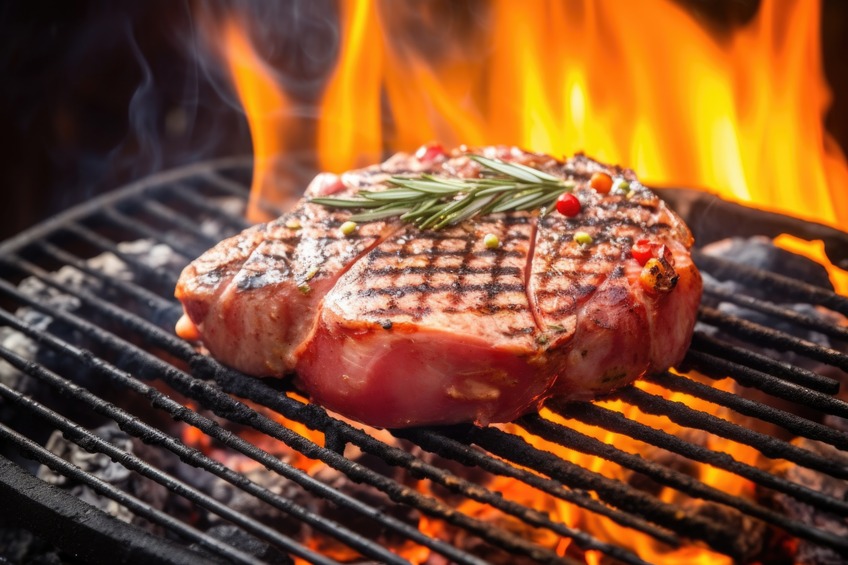
Comparing grilling with wood and charcoal involves examining various aspects such as flavor, and cost.
Each fuel type has distinct characteristics that influence the grilling experience and the impact on the environment and the wallet.
Flavor Profile Comparison
Wood and charcoal impart different flavors to grilled food.
Wood provides a variety of flavors depending on the type of wood used.
Fruit woods like apple and cherry offer sweet, mild tastes, while hardwoods like oak and hickory deliver robust, smoky notes.
Charcoal grilling, particularly when using lump charcoal, imparts a traditional, smoky flavor appreciated for its intensity.
Briquettes, on the other hand, can include additives that influence flavor.
The choice of fuel plays a noticeable role in the taste outcome of grilled food.
Cost Considerations
When considering costs, both initial and ongoing expenses are relevant.
Wood can sometimes be less expensive, particularly in areas where it is readily available.
However, specialized woods for flavor may cost more.
Charcoal, particularly standard briquettes, often presents a more affordable initial cost but can add up due to faster burn rates during longer grilling sessions.
Lump charcoal, preferred for its purer burn and flavor, typically costs more than briquettes.
Pricing differences can influence choice depending on frequency and type of use.
Best Practices for Healthy Grilling
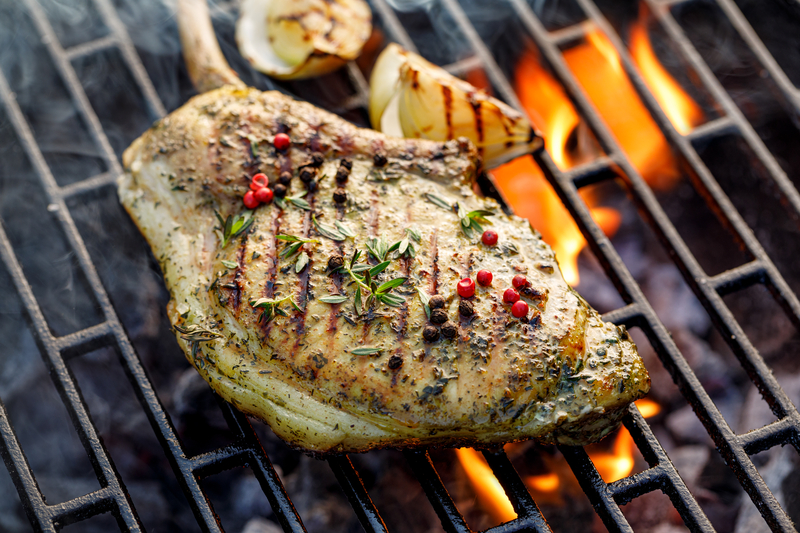
To grill healthily, it’s essential to apply proper techniques, make informed choices about fuel, and ensure regular maintenance of equipment.
These practices enhance safety and taste while helping to minimize health risks.
Grilling Techniques to Minimize Health Risks
When grilling, reducing the formation of harmful compounds, such as polycyclic aromatic hydrocarbons (PAHs) and heterocyclic amines (HCAs), is vital.
Marinating meat before grilling can significantly lower these risks.
Utilize marinades containing olive oil, citrus, or vinegar for best results.
Opt for lower cooking temperatures and ensure that meat is not directly exposed to open flames.
Regularly turning meat and removing charred portions helps prevent the accumulation of harmful substances.
Thin cuts of meat cook faster, reducing exposure time and potential toxin formation.
Choosing the Right Fuel for Health-Conscious Cooking
Selecting appropriate fuel impacts both flavor and health.
Lump charcoal is a purer option compared to briquettes, containing fewer additives.
It can impart a clean, smoky flavor without introducing unnecessary chemicals.
Wood chips are also an excellent choice for adding flavor while keeping the health effects minimal.
Avoid any treated or chemically enhanced fuels that could release toxic fumes.
Consider the origin of the wood; woods like hickory, apple, or cherry offer unique flavors with minimal health risks.
Smarter fuel choices contribute to healthier, flavorful grilling.
Maintenance of Grilling Equipment
Regular cleaning and upkeep of grilling equipment are critical to preventing contamination and ensuring longevity.
Grill grates should be scrubbed clean before and after cooking to remove residue and bacteria.
Use a wire brush or a scraper for effective cleaning.
Proper storage of the grill increases its lifespan.
Protect it from elements such as rain and dust when not in use.
Check for rust and replace parts as necessary to maintain performance and safety.
Regular lubrication of moving parts and ensuring secure connections of propane tanks or gas lines enhances safety measures.
Bottom Line – Is it Healthier to Grill With Wood or Charcoal?
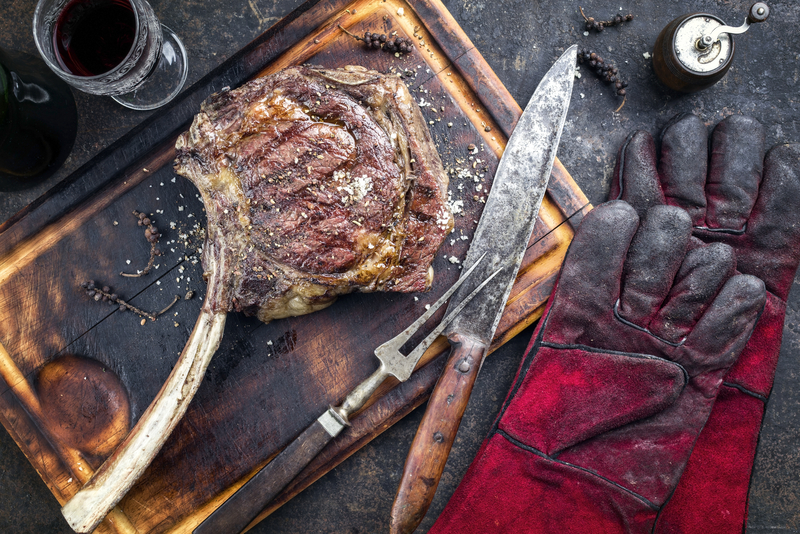
When deciding between grilling with wood or charcoal, several factors come into play.
Health implications are a top priority for many. Both methods produce smoke containing polycyclic aromatic hydrocarbons (PAHs) and heterocyclic amines (HCAs), which are potential health concerns.
Charcoal grilling typically achieves higher temperatures, which can increase the formation of HCAs.
Wood, on the other hand, tends to burn cooler but produces more smoke, possibly leading to higher PAHs exposure.
Flavor is another critical aspect.
Charcoal is often preferred for a consistent, robust flavor, while wood can impart a variety of subtle flavors depending on the type used, such as hickory or mesquite.
In terms of environmental impact, wood is a renewable resource and may have a smaller carbon footprint than charcoal, which often involves more processing.
When choosing the best option, it’s essential to consider personal preferences in flavor, awareness of potential health impacts, and environmental concerns.
Each method has its own benefits and drawbacks, so individual priorities should guide the decision.

